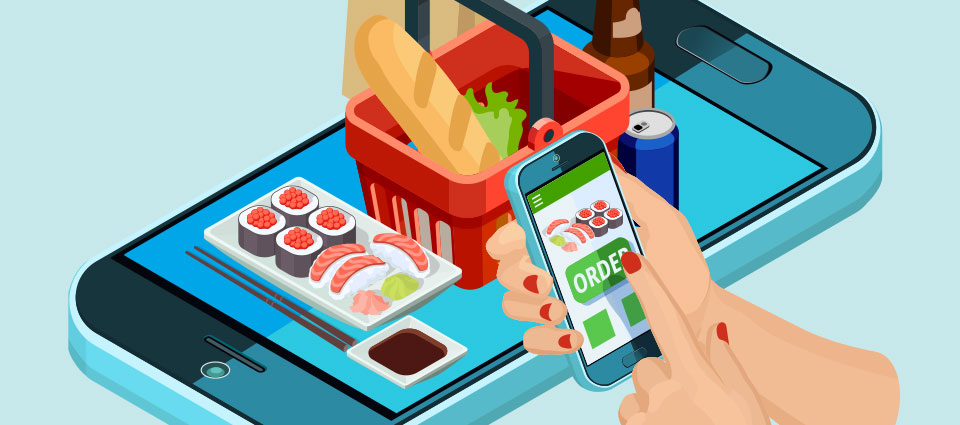Are Subscription Services a Threat to the Grocery Industry?
March 11, 2019Meal kits sound convenient, don’t they? Sign up to get pre-sorted ingredients for cooking meals delivered straight to your door. All you have to do is cook the meal kit and enjoy it without measuring anything or running to the store to get the ingredients.
There is an impressive variety of meal kits available. There are some that cater to specific diets like vegan and paleo, lunch meal kits for both adults and children in school and snack kits, to name a few.
Are enough consumers interested in meal kits to erode their need to spend money grocery shopping at a traditional grocery store? We are tackling this question in this article. First, we will define subscription services (sub services for short). Next, we will take a general look at how much consumer interest there is in sub services, then examine who the typical sub service customer is. We will provide a snapshot look into the meal kit industry and then answer whether or not meal kits are a threat to the grocery industry.
Defining Subscription Services
Broadly speaking, sub services are a business model in which a consumer pays a regular fee to access goods or services. This includes streaming video services like Netflix and Hulu, clothing rental and meal kit sub services. Convenience is at the core of these services.
However, they are not classified under the North American Industry Classification System (NAICS), so technically sub services are not considered an industry. NAICS is the standard used by federal statistical agencies in classifying business establishments.
It’s difficult to classify sub boxes because of their diversity. Multiple industries offer different services with varying degrees of customizability and each company is going about their sub services in a unique way. Some sub services are standalone companies while others are part of a larger company’s offerings.
Payment and participation structures vary by sub services—some send boxes of merchandise based on criteria like a niche interest or consumer-indicated preferences while others send subscribers a curated selection from the company (like a beer of the month sub service).
Consumer Interest in Sub Services
The subscription e-commerce market has grown by more than 100% a year over the past five years.
Consumer interest in sub services has also increased. Online visits to subscription services have risen almost nine-fold from 4.7 million visits in April 2014 to 41.7 million in April 2018.
The top 10 subscription box sites accounted for 61% of the industry’s online visits. Those top 10 sub services are:
• Ipsy (makeup and beauty)
• Blue Apron (meal kit)
• Hello Fresh (meal kit)
• Stich Fix (fashion)
• Dollar Shave Club (grooming)
• Home Chef (meal kit)
• FabFitFun (beauty, wellness, fitness & fashion)
• Birchbox (beauty)
• Loot Crate (for gamers & nerds)
• Grove Collaborative (sustainable home products)
Food-related sub services had the highest volume of visits from 2014 to 2018. The top food sub boxes include:
• Blue Apron
• Hello Fresh
• Home Chef
• Graze
• Sunbasket
About Sub Service Subscribers
People have more disposable income but less free time to spend it.
Disposable per capita income is rising at a rate of 1.9% but in the last two years, people lost an average of 2.41 hours of free time. In 2017, the average person in the U.S. had 5.24 hours of leisure time per day. In 2015, the average person had 2.83 hours of leisure time.
Given this, is it surprising that food meal kits is one of the fastest-growing and most competitive of the sub box categories? As many as 1 in 10 U.S. consumers subscribe to a food subscription service. Young professionals tend to buy food subscriptions, which is a market “not typically targeted by grocery stores,” according to an IBISWorld’s industry analyst.
15% of online shoppers have subscribed to an e-commerce service over the past year, with the most subscribing to streaming media. The average sub customer is most likely to be 25 to 44 years old, to have annual incomes in the $50,000 to $100,000 range and to live in urban environments in the Northeastern United States. These subscriptions particularly appeal to women, who account for 60 percent of sub service customers. Sub box purchasers are two times more likely than average to purchase on Amazon.
Recommendations are a key trigger to get people to subscribe to a service, both word of mouth and online reviews. How many U.S. consumers subscribe to a sub service?
• 10% Grocery
• 71% Video
• 18% Fashion/Beauty
Churn is the biggest challenge to sub service providers. McKinsey found that almost 40% of subscribers cancel meal kit services. More than 1/3 cancel within 3 months and over half cancel within 6 months.
Meal Kit Snapshot
Meal kits are at the intersection of grocery, ecommerce and takeout food options. Their prominence has steadily increased since they debuted in the U.S. in 2012. By 2016, there were over 150 meal kit delivery services in the U.S. By the end of 2017, meal kit subscription services were valued at $2.2 billion.
Blue Apron and Hello Fresh are the two largest publicly traded, pure-play meal kit providers. Neither is making a profit but Hello Fresh has more customers and generates more revenue than Blue Apron.
Blue Apron has a history of losses. Its net income has been in the red for the past three consecutive years, according to its 2018 annual report. In 2018, it’s net income was -$122,149. In 2017, its net income was -$210,143.
Like Blue Apron, Hello Fresh also experienced net losses in 2017 and 2018, but its net loss in 2018 was less than its net loss in 2017. According to Hello Fresh’s 2018 annual report, it experienced a -$20.5 million (in Euros) net loss in 2018 and a -$29.1 million (in Euros) net loss in 2017.
One obstacle in the path to profitability is expenses. Marketing expenses were the third largest expense for both Hello Fresh and Blue Apron in 2017 and 2018 (after cost of goods sold and fulfillment expenses). However, Hello Fresh outspends Blue Apron on marketing. Marketing expenses accounted for 27% of Hello Fresh’s revenue in 2017 and 26% of its revenue in 2018. Blue Apron’s marketing expenses accounted for 18% of its net revenue in both 2017 and 2018.
Hello Fresh’s bigger marketing spend is paying off—the company experienced a 22% increase in U.S. customers from 2017 to 2018. Blue Apron experienced a 19% decrease in its total number of customers from 2017 to 2018. Hello Fresh also saw a 2% increase in its average order value among U.S. customers and a 3% increase in the number of orders from its U.S. customers in the past year. Blue Apron saw a 13¢ decrease in the average order value (which accounts for a less than 1% year-over-year decrease) and no change in the number of orders per customer.
Both Blue Apron and Hello Fresh continue to expand their product offerings and expressed optimism for their future business growth.
“We are entering 2019 with confidence in our strategic direction. We believe our newest product innovations and new strategic partnerships with WW [Weight Watchers] and Jet have great potential as we enter the year with a deliberate focus on expanding our offerings to strategically and thoughtfully serve a strong base of loyal customers and attract new, high affinity consumers, as well as continuing to prioritize operational optimization and expense management,” said Brad Dickerson, Blue Apron Chief Executive Officer, according to the press release announcing its 2018 annual report.
Hello Fresh asserted that there is “significant room for growth in the meal-kits category” in its 2018 annual report. Its CEO and Co-Founder Dominik Richter also expressed enthusiasm for the company’s potential.
"2018 was our most successful year to date, in which we meaningfully expanded our customer offering in terms of meal types, choice and price and assumed market leadership in every single market. We're really proud to have made such strong progress on our mission to make HelloFresh accessible to a rapidly increasing number of people and improve the way they eat.” Richter said in a press release announcing its 2018 annual report.
Are Meal Kits a Threat to the Grocery Industry?
There’s no denying the impact that sub boxes have on established industries. The three biggest of those impacts are:
• Sub companies may get acquired by other companies
• Partnerships between sub companies and existing companies for business and promotional opportunities
• It’s a new and consistently evolving “industry” that’s creating a new standard for convenience
What is the impact to consumers’ spending habits? Minimal, according to the Reality of Shopper Motivation Report from GPShopper, released in fall of 2018. Key findings from this report regarding subscription customers include:
• 5% of shoppers have spent less money because the subscription ox replaces other purchases that they would have made
• 5% are going into physical stores less often because they’re receiving products in a subscription box
• less than 9% of shoppers have seen a change in their shopping habits since signing up for a subscription box
• 21% of consumers find the ability to sample products without actually purchasing them separately to be an appealing option to subscription boxes
Supermarkets and grocery stores remain the largest food providers in the U.S. However, spending on prepared food at places like restaurants has been increasing for the past 5 years.
The future of meal kits is not a subscription model but rather a curated, rotating set of in-store offerings, former Chef’d Senior Vice President of Retail Sean Butler said in an interview for a Mercatus podcast episode. Interestingly, Butler said this just days before this meal kit company announced it was closing its doors and laid off 350 employees. Not long after Chef’d announced this, True Food Innovations bought the company and now Chef’d meal kits are being sold in grocery stores rather than via an online subscription model.
So while meal kit providers aren’t profitable businesses that are successfully diverting large shares of consumer dollars away from traditional grocery spending, they do pose a cause for concern. Demand for convenient meals exists—and now it’s up to grocery industry to find creative ways to meet that demand.
The image used was designed by macrovector / Freepik

